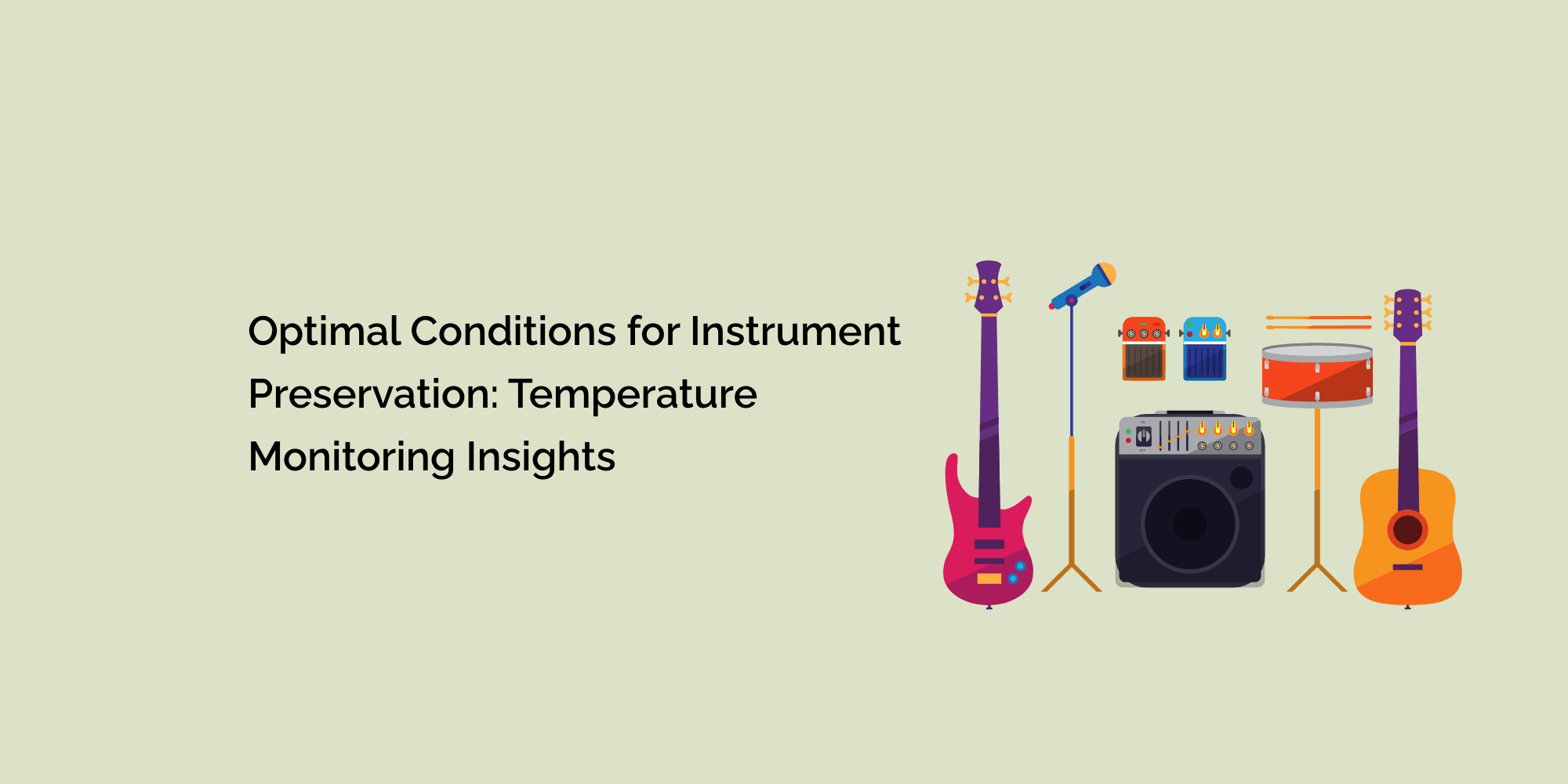Preserving musical instruments in optimal condition is essential for musicians, collectors, and enthusiasts alike. Temperature plays a critical role in the various factors that influence instrument health. Temperature fluctuations can harm instrument materials, leading to structural damage, tonal instability, and diminished value. This comprehensive blog post will explore the importance of temperature monitoring for instrument preservation and provide valuable insights into achieving optimal temperature conditions. By understanding the impact of temperature, implementing effective monitoring strategies, and creating a suitable storage environment, you can ensure your cherished musical instruments' longevity and performance quality.
The Influence of Temperature on Instrument Preservation:
-
Effects of High Temperatures: Exposure to high temperatures can cause numerous issues for musical instruments. Excessive heat can lead to drying, warping, or cracking in wood instruments. For brass and wind instruments, high temperatures can impact the integrity of solder joints, affect valve operation, or cause lacquer damage. Electronic devices are also vulnerable, as extreme heat can damage sensitive electronic components.
- Consequences of Low Temperatures: Extreme cold temperatures can equally damage musical instruments. In wooden tools, freezing temperatures can cause the wood to contract, leading to structural instability. Brass and wind instruments can suffer from frozen valves or compromised seal integrity. Electronic devices may experience battery or display malfunctions in cold conditions.
The Optimal Temperature Range for Instrument Preservation:
Maintaining a stable temperature within a specific range is crucial for instrument preservation. While exact temperature requirements may vary among instrument types, a general guideline for optimal storage temperature is between 68°F and 72°F (20°C to 22°C). This range provides a suitable environment for most musical instruments, balancing the preservation of materials while avoiding excessive drying or humidity.
Effective Strategies for Temperature Monitoring:
- Thermometers: Thermometers are a practical and straightforward method for monitoring temperature in instrument storage areas. Analog thermometers with visible mercury or alcohol columns are cost-effective, while digital thermometers offer precise and instant temperature readings. Place thermometers in visible locations for easy monitoring.
- Wireless Temperature Sensors: Wireless temperature sensors provide flexibility and convenience in monitoring temperature fluctuations. These compact devices can be strategically placed throughout the storage area and wirelessly transmit temperature data to a central monitoring unit. Real-time monitoring allows for timely intervention if any irregularities are detected.
- Data Loggers: Data loggers are electronic devices that record and store temperature data over time. They offer a comprehensive view of temperature trends, allowing for analysis and identification of patterns. Data loggers are particularly useful for long-term monitoring and evaluating temperature fluctuations in the instrument storage area.
- Intelligent Monitoring Systems: Smart monitoring systems utilizing Internet of Things (IoT) technology are becoming increasingly popular for instrument temperature monitoring. These systems use wireless sensors, cloud connectivity, and data analytics to provide real-time monitoring, alerts, and remote access to temperature data. Intelligent monitoring systems offer advanced features such as customizable temperature thresholds, automated notifications, and historical data analysis.
Creating a Suitable Storage Environment:
- Temperature Stability: Maintaining temperature stability is crucial for instrument preservation. Avoid exposing instruments to rapid temperature changes or extremes. Minimize direct sunlight exposure, and ensure the storage area is adequately insulated to prevent heat or cold transfer from external sources.
- Humidity Control: Temperature and humidity are closely related and should be monitored for optimal instrument preservation. Aim for 40% and 50% relative humidity to prevent excessive drying or moisture absorption. Excessive humidity can promote mold growth, while low humidity can cause wood to dry out and crack.
- Ventilation: Proper ventilation is essential to ensure airflow and prevent the buildup of stagnant air, which can lead to moisture retention and mold growth. However, avoid excessive drafts or exposure to outdoor air, as they can introduce temperature fluctuations or contaminants.
- Instrument Placement: When storing instruments, consider their proximity to potential sources of temperature fluctuation, such as windows, doors, radiators, or HVAC vents. Place tools away from these areas to minimize exposure to temperature variations.
Regular Monitoring and Maintenance:
- Routine Checks: Regularly monitor the temperature in your instrument storage area to ensure consistency within the optimal range. Perform daily or weekly checks to identify any temperature irregularities or changes that may require attention.
- Calibration and Maintenance: Regularly calibrate and maintain temperature monitoring devices to ensure accurate readings. Follow manufacturer guidelines and best practices for device maintenance and calibration.
- Professional Assistance: For valuable or delicate instruments, consider seeking professional assistance from instrument technicians, luthiers, or storage facility experts. They can provide tailored advice on temperature monitoring, storage conditions, and maintenance for your specific instruments.
Certainly! Here are some frequently asked questions (FAQs) about temperature monitoring for instrument preservation:
How often should I check the temperature in my instrument storage area?
Regular temperature checks are recommended to ensure the stability of the storage environment. It's advisable to check the temperature at least once a day or a few times a week, especially if the storage area is prone to temperature fluctuations.
Are there specialized systems for temperature control in instrument storage?
Yes, there are specialized systems available for temperature control in instrument storage. HVAC systems with precise temperature control capabilities can provide a stable environment. Additionally, climate-controlled cabinets are explicitly designed to maintain optimal temperature conditions for instrument storage.
Conclusion:
Temperature monitoring is a critical aspect of preserving musical instruments in optimal condition. By understanding the impact of temperature fluctuations, implementing effective temperature monitoring strategies, and creating a suitable storage environment, you can ensure your prized instruments' longevity and performance quality. Utilize thermometers, wireless sensors, data loggers, or intelligent monitoring systems to monitor temperature and take necessary steps to maintain temperature stability. Remember to consider humidity control, proper ventilation, and regular maintenance to complement your temperature monitoring efforts. With a proactive approach to temperature monitoring and instrument preservation, you can safeguard your cherished musical instruments' beauty, playability, and value for generations to come.








